FW

At the closing dinner gathering of PSF on March 15, Gregory So, Secretary for Commerce and Economic Development, HK remarked, “The presence of so many international sourcing experts here speaks for itself on the significance of Hong Kong as a global sourcing hub. Hong Kong enjoys a unique advantage under our ‘one country, two systems’ arrangement which no other city in China, and indeed no other economy in the world, can match.”

The ‘one country’ part of this successful formula, according to him means that HK enjoys the best market access to the Mainland, and many other benefits that come with being a privileged player in China, the world's second-largest economy. As for ‘two systems’, he said, “we offer free market access to Hong Kong, the common legal system, rule of law, open and democratic government, independent judiciary and English as one of the official and business languages. This unique duality has made HK a magnet for business where nearly 8,000 international companies have established their foothold.” Hong Kong is a dynamic global city and the perfect "super-connector" linking up enterprises with the promising business opportunities in the region.
Speaking on global economic scenario, he said, “Looking ahead, the lackluster global economy and the sluggish export climate pose challenges to us. The world economy is in need of a new and strong driving force in the 21st century. And I believe the ‘Belt and Road Initiative’ can be that much-needed force. Hong Kong has what you need in a strategic partner as you venture into markets of the Belt and Road countries.”
A member of the World Bank Group, IFC is partnering with global leading apparel and footwear company VF Corporation and consumer products retailer Target Corporation to improve resource efficiency at their supplier factories in Vietnam. Under the first phase of this program, energy and water efficiency assessments will be conducted at about 30 factories over the next 12 months to help them reduce operating costs and improve productivity while contributing to the country’s green growth and climate change targets.
Incidentally, the textile, apparel and footwear sector is a significant contributor to Vietnam’s economy. In 2015, the sector’s exports reached $39.2 billion and generated approximately three million jobs, most of which are for women. While this sector is energy and water intensive, there are opportunities for reducing resource consumption by 20 per cent or higher by using latest technology and good operating practices.
Commented Kyle Kelhofer, IFC Country Manager for Vietnam, Cambodia and Lao PDR, with Vietnam’s increasing participation in trade agreements, including the Trans-Pacific Partnership and the EU Free Trade Agreement, the local textile sector is poised for faster growth, creating increased demand for sustainable energy and water use practices. Vietnam’s textile enterprises stand to benefit from this IFC program by further access to global markets while implementing resource efficiency best practices.
In a significant development, New Zealand wool exporters scrambling to fill orders for lower-grade wool have driven up the price of what are known as oddments in recent weeks because the season to date has delivered an unexpectedly high-quality clip.
According to Malcolm Ching, an executive at New Zealand Wool Services International in Christchurch wool oddments are the shorter parts of the fleece, such as from the belly, second pieces, eye clips, necks and those parts stained or otherwise discoloured. They are often baled and sold separately but a paucity of lower-quality wool has meant exporters are blending oddments with other higher wool grades to make up orders.
Wool is New Zealand's 14th largest export commodity, with annual exports of the fiber up 8.2 per cent to $814 million last year. Exporters typically contract to sell wool several months ahead of delivery on the expectation they can buy the fiber at auction as needed and a shortage of lower-quality wool has driven up prices for oddments at New Zealand auctions in the past six weeks.
Techtextil North America to be from May 3-5, 2016 at the Georgia World Congress Center in Atlanta will host over 30 hand selected industry experts from around the world. They plan to reveal advanced technologies at the premier symposium held concurrently with the show floor.
Techtextil North America is co-located with Texprocess Americas and JEC Americas. The trifecta of these shows brings together the full spectrum of technical textiles, nonwovens, sewn products and equipment, technology and composites into one central location.
During the three-day technical textile event visitors will participate in 10 hot topic sessions and two bonus sessions put on by IAF and a joint session hosted by Techtextil North America, Texprocess Americas and JEC Americas. Visitors can expect to connect with potential new partners, learn about exciting new technologies and discover how they can grow their business while partaking in the Techtextil North America Symposium.
The highlights of the symposium include: Tension structures, textile testing and how it affects the industry, advancements in nonwovens, new fiber technologies, advancements and future uses smart textiles, auxetic and protective textiles, innovations in geosynthetic textiles, welding, sustainability/how does sustainability aid the textile industry? .
The 2016 Symposium has been developed by leading industry experts to provide a platform for presenters to interact with attendees after each session.
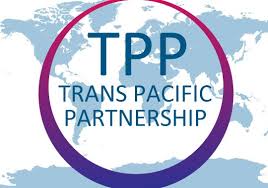
Transpacific Partnership Agreement (TPP) was one of the top discussion points on Day 1 of Prime Source Forum. Discussions in the session ‘Update on TPP and development conditions in ASEAN and Africa’ finally had to be split into two between the topics: TPP and emergence of Africa in manufacturing.
Moderator of the session Alex Young , Group CEO, TexRay Industrial said in his opening remarks “China that has been dominating world textile market for over 20 years now, representing 40 per cent of American imports, with an increasing wage structure of 15 per cent year on year, will have to give away part of its commodity business.” However, shift of business from China is itself a speculative subject and needs to be seen going forward.
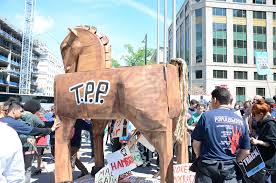
“TPP finalized on October 5, 2015 and signed on February 4, 2016, after a lot of government-to-government secretive discussions for five years, comes at this point in time, as a very important partnership to encourage new supply bases,” adds Prabakaran Kesavan , Founder Venlaak Wear Int, a panelist. He says, though few may think about Vietnam or Cambodia, there’s another emerging context about Africa, where business may shift in current paradigm. In addition to 12 country members who have signed TPP, a few other countries like Philippines, Korea and Thailand may be interested in joining. “TPP is considered a living agreement, where new countries can join, new topics can be added. TPP is being considered the most ambitious deal. The scope of this treaty covers subjects like sustainability, minimum wages, child labour, environmental issues and along with IPR issues, one whole chapter is on SMSs itself, countries are reviewing it very carefully.”
Raphael B Madarang, Director, Global Trade Compliances and Management, APL Logistics points out TPP would facilitate tariff reduction from 16 to 32 per cent, making a huge difference. This would help restructure and relocation of supply locations across the supply chain. Because of the huge duty reduction most member countries will avail these benefits in a span of 5 to 10 years. However, Vietnam is being considered as the champion of TPP, with its low cost and direct access to the US and Canada. Vietnam a also has a FTA with EU. Even though infrastructure is in place, from skill and labour point of view, may face issues of skill shortage by 2017-118.
Talking about challenges for implementation says Kesavan said, “There will be many objections and challenges to implement TPP smoothly, even from the US’ point of view, there’s a political agenda on weather America wants to go ahead with TPP or not? Is it really a job threat for the US, especially from textile industry’s perspective?....” Besides, technically there are two years before TPP is implemented, time enough for all partner countries to set up their individual internal structures and policy framework streamlined to get into this.
The 5,444 page TPP document, as of now is a challenge to be translated into different languages for different countries as also the interpretation for different regulations. There are challenges like who is going to monitor, from where yarn will come under Yarn Forward rule, there are still many issues that need to be cleared at government-to-government level.
Avedis H Seferian, President & CEO, Worldwide Responsible Accredited Production ( WRAP) said, “Industry needs to look at TPP holistically for better implementation, that has been emphasized in all the sessions. Addressing Chapter 19 of TPP, labour requirements, and others, however I feel TPP bashing is more political, once we have candidates settled for elections in the USA, it would be more realistic than rhetoric , I am more optimistic.”
By 2018, China is likely to be a net importer of textiles and garments, felt some panelists. Vietnam as of now sources huge amount of yarn from China but in order to capture TPP benefits, Vietnam may have to shift its yarn sourcing from the US or the other TPP countries. Shift and relocation of business is likely to happen but where will this shift be remains to be seen.
“Personally, I have more confidence in Africa, where the shift is likely to be,” opined Helen Hai, Goodwill Ambassador, United Nation Industrial Development Organisation ( UNIDO). Hai emphasized that she has worked in Africa and it is the next best bet for the world. Prabakaran however, felt it remains to be seen if China is going to relocate its production to Africa or India or there are more options. Like in case of Yarn forward rule for Vietnam, it could be India, Turkey or Bangladesh or may be American fabrics manufacturing specially denim gets share of the pie.
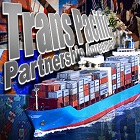
In his welcome address, on second day of PSF, Hon Felix Chung Kwok-pan, Member, Functional Consultancy-Textile and Garment, The Legislative Council of Hong Kong, said that when five years ago talks of TPP came across Hong Kong Government, it was not a very interesting idea, and our government didn’t respond in a positive manner, as manufacturing from Hong Kong was shifting largely to other locations. Now, when we made presentation to the government about the scope TPP may offer in its current format, we may have manufacturing coming back to Hong Kong.
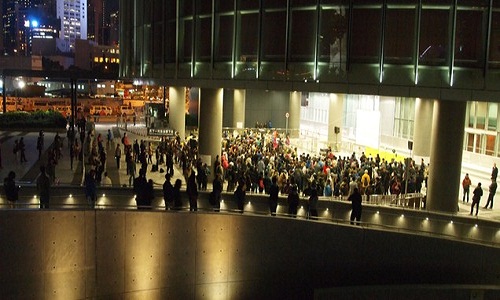
Talking about the supportive role of HK government he mentioned that earlier during the Budget announcement in 2016, $500 million has been allocated to further the development of the fashion industry that shall also help aggressively promoting CENTRESTAGE, a news initiative of HKTDC to promote local talent and Asian brands, joining the global fashion calendar in the month of September.
As a legislative, he referred to a meeting he attended in San Francisco last week, where it has been decided to hold a summit in Hong Kong in 2017 in association with Sustainable Apparel Coalition (SAC). He also referred to his meeting in head offices of Facebook and Google, as how they could explore to have some new cooperation to track changing consumer behavior of consumer today, so that the changes could be applied in supply chain. Eventually, he hopes that in next 3 to5 years, Hong Kong will change to a truly global fashion centre
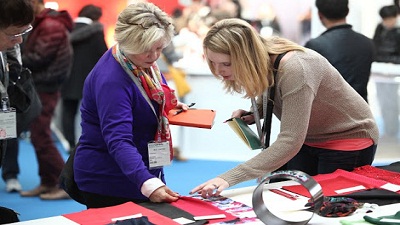
This year’s Intertextile Shanghai Apparel Fabrics is poised to be the most diverse Spring edition yet, with a number of product zones adding to the flavour of the fair. This edition’s one of the larger product zones is ‘Beyond Denim,’ with over 90 exhibitors presenting their latest products including innovative denim yarn as well as stretch, embroidered, jacquard and knit denim fabrics.
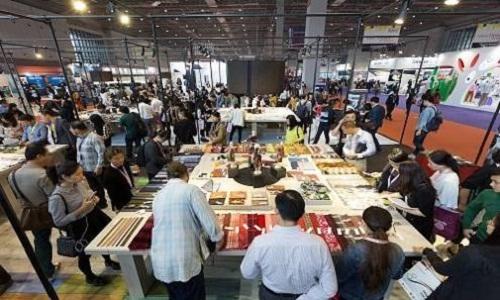
Over 3,000 exhibitors from 28 countries and regions (in 2015 there were 2,636 exhibitors from 24 countries) are converging on Shanghai for the latest Spring edition of Intertextile Shanghai Apparel Fabrics. The fair takes place from March 16 to 18 at the National Exhibition and Convention Center (Shanghai). The organisers have focused a lot attention since the last edition on improving existing services and facilities and adding new ones to increase the convenience for participants.
Infrastructure improvements
As Wendy Wen, Senior General Manager, Messe Frankfurt (HK) says exhibitors and buyers will notice a lot of improvements to the fairground this year, particularly around the entrance to the venue and services inside the halls. Some of these services include a number of new restaurants, cafes, cloak rooms, free massage area, charging stations for electronic devices and a hotel shuttle bus service.
Numerous groupings of exhibitors by country/region and product also assist buyers in their sourcing experience. The International Hall (Hall 7.2) houses SalonEurope, Premium Wool Zone, Verve for Design, Functional Lab, All About Sustainability and the Beyond Denim product zones. If it’s a particular country buyers are after, then the Milano Unica Pavilion from Italy, France, Germany and Portugal Zones as well as country/region pavilions from Japan, Korea, Taiwan, Pakistan and the TEXPROCIL Pavilion from India are all located in this hall.
Meanwhile, Hall 8.1 features the Accessories Zone with overseas and domestic fashion and garment accessories suppliers. Domestic exhibitors feature in this and four other halls: 6.1, 6.2 and 8.2 for ladieswear, 6.1 for lingerie and swimwear, 7.1 for suiting and shirting, 8.1 for functional and sportswear and 8.2 for casual wear.
Options to choose from
The fair has plenty of options on-hand for buyers that prefer to start their sourcing experience by discovering the S/S 2017 trends first. The Intertextile Directions Trend Forum is located in Hall 7.2, while three domestic forums include the new Fashion Focus trend forum in Hall 6.2, and areas for suiting trends in Hall 7.1 and ladieswear in Hall 6.1. Trend Forum Tours also take place on days 1 and 2. More in-depth knowledge can be garnered from seminars on design and trends, sustainability, market information, technology and more, as well as new panel discussions focusing on denim, sustainability and functional fabrics.
In addition to apparel fabrics and accessories, four other textile fairs occur concurrently: Yarn Expo Spring (Hall 5.1), Intertextile Shanghai Home Textiles – Spring Edition (Hall 5.2), CHIC (Halls 1-3 and 4.1) and PH Value (Hall 1).
Intertextile Shanghai Apparel Fabrics-Spring Edition 2016 is co-organised by Messe Frankfurt (HK); the Sub-Council of Textile Industry, CCPIT; and the China Textile Information Centre.
Indorama has launched its spandex brand, Inviya. Inviya can be easily incorporated into a variety of textile processing methods such as core spinning, air covering, circular knitting, etc. This makes it possible to be included in the manufacturing process of a wide variety of textiles. With this versatility, Inviya is also used to add extra glamour, comfort, and charm to even ethnic clothing, both daily wear as well as special occasion wear.
Be it lounge wear, swimwear, winter wear, or inner wear, Inviya has amazing practical benefits that add value to the garment manufacturer and to the consumer. No longer do Indian textile manufacturers have to import world class quality spandex fibers for use in their garment manufacturing processes.
Inviya is fast becoming the spandex filament of choice among discerning manufacturers in India and abroad due to its many benefits and properties that set it apart from the rest. It is more stretchable than other brands of spandex, being six times more stretchable than its original length. Since Inviya is so adaptable to different dyeing processes, it makes available a wide variety of colors and designs that add vibrancy to everyday clothing.
Inviya comes from Indorama’s manufacturing facility in Himachal Pradesh.
www.inviya.com/?Home
Nepal’s garment entrepreneurs, who were trying to boost their business with the recent enactment of Trade Facilitation and Trade Enforcement Act by the US Congress, are disappointed now. During a recent interaction with Garment Association Nepal (GAN), the visiting Deputy Assistant US Trade Representative Dawn Shackleford made it clear that the law does not encompass major garment items produced in the country.
The Congress, through the law, has authorised the US government to extend duty-free facility to Nepal for 66 items that include pashmina products, headgear, shawls, leather products, scarves, and travel goods (bags, suitcases), among others, one of the representatives of GAN quoted Shackleford as saying during the interaction. The facility also includes carpet items manufactured in Nepal, which had been excluded by the US government’s Generalised System of Preferences (GSP) facility.
The major garment items produced in Nepal are shirts, trousers, jackets, suits, among others. However, these items have not made the cut. Shackleford visited Nepal recently to hold discussions on the Trade and Investment Framework Agreement (TIFA) council meeting with the government. The TIFA council meeting was expected to be held once a year when the framework agreement was signed in 2011, but has only met once in the US after the agreement was signed.
Bangladesh’s exporters say they don’t get the benefits of 100 per cent duty-free access to Indian markets due to tariff and non-tariff barriers. India has awarded Bangladesh duty- and quota-free access of all products except alcohol and tobacco to its market.
Bangladesh is entirely dependent on the import of cotton from India to meet its demand. And cotton imports from India are on the rise. There are 400 cotton mills in Bangladesh, which consumed 6.1 million cotton bales worth about $2.2 billion in 2015. These mills produce 2,250 million kg of yarn over 11 million spindles.
India is the largest supplier of cotton and cotton yarn to Bangladesh. Cotton, cotton yarn and cotton fabric are the single largest commodity export from India, which accounted for about 22.5 per cent of India’s total exports to Bangladesh. The general opinion is that the trade volume between India and Bangladesh is in India’s favor. Bangladesh imported products worth $5.82 billion from India in the last fiscal year while its export was worth only $527 million.
Moreover frequent visits by business people from both countries have created a friendly atmosphere. One challenge Bangladesh faces is the procurement of cotton at a competitive price.












